Imagine stepping into your kitchen and plucking fresh basil leaves for your pasta or snipping a sprig of rosemary to flavor your roast. Growing herbs on a windowsill not only brings vibrant greenery into your living space but also provides a handy culinary resource, right at your fingertips. Whether you’re a budding gardener just starting to explore the joys of nurturing plants or a seasoned green thumb looking to expand your indoor garden, cultivating herbs by your window is an easy and rewarding endeavor.
Windowsill herb gardens are more than just a charming addition to your home; they are a gateway to understanding the rhythms of nature, even within the confines of urban life. In this article, we’ll explore a variety of herbs that thrive in the cozy confines of your windowsill, turning even the smallest of spaces into a lush, aromatic haven. You’ll learn about the specific needs of each herb, from sunlight requirements to watering tips, ensuring that your indoor garden flourishes with minimal fuss. Prepare to transform your windowsill into a miniature sanctuary of flavor and fragrance, where the art of gardening is accessible to all.
Choosing Ideal Windowsill Herbs
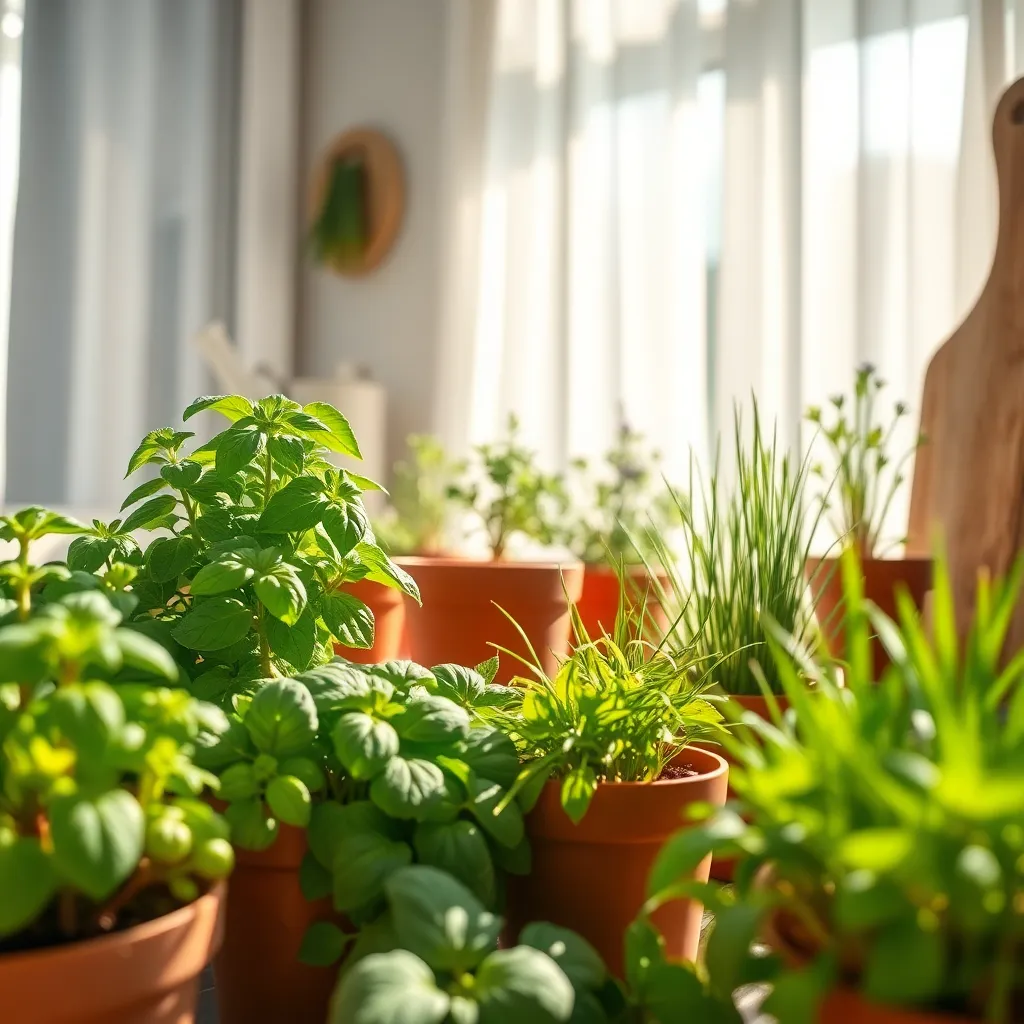
When selecting herbs for your windowsill, consider those that thrive in small spaces and require minimal maintenance. Basil, parsley, and chives are excellent choices for beginners due to their adaptability and ease of growth.
Ensure that your chosen herbs receive adequate sunlight, as most herbs require at least 6 hours of direct light daily. If natural light is limited, consider supplementing with a grow light to provide the necessary brightness.
Use a well-draining potting mix to prevent waterlogging, which can be detrimental to herb growth. A mix with perlite or sand will help enhance drainage, ensuring healthy root systems.
Water your herbs consistently, but avoid overwatering as it can lead to root rot. A general rule is to water when the top inch of soil feels dry, ensuring the soil remains moist but not soggy.
For those looking to advance their skills, experiment with companion planting by pairing herbs with similar needs, like thyme and oregano. This technique not only maximizes space but also promotes a healthier growth environment through natural pest deterrence.
Optimal Light for Herb Growth
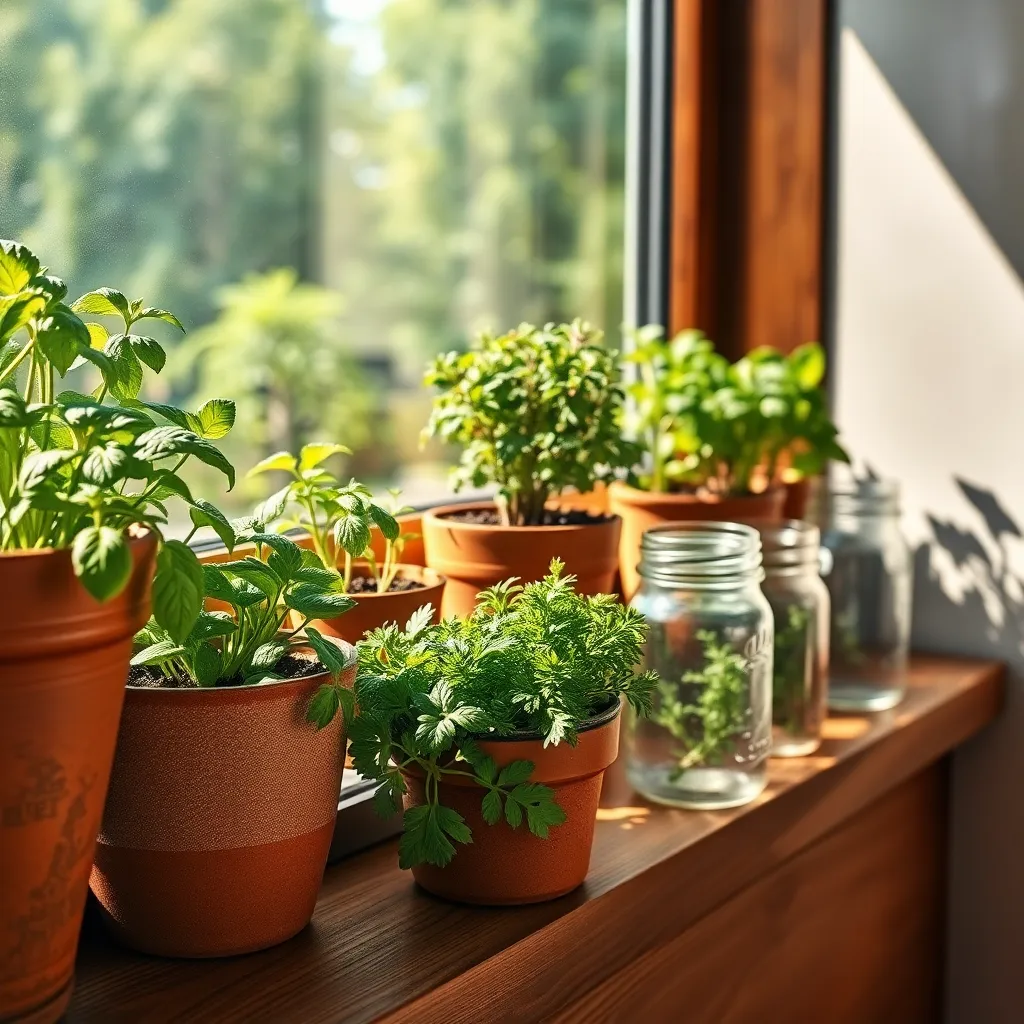
When growing herbs on a windowsill, understanding the importance of light is crucial. Most herbs thrive in bright, indirect sunlight, which means placing them in a south-facing window is often ideal.
Consider the specific light needs of each herb you choose to grow. For instance, basil and thyme prefer at least 6-8 hours of sunlight daily, while mint can tolerate slightly less.
To optimize light exposure, rotate your herb pots every few days. This ensures even growth by allowing all sides of the plant to benefit from available sunlight.
If natural light is limited, supplement with grow lights to mimic the sun’s rays. Position these lights a few inches above your plants and keep them on for 12 to 16 hours a day, adjusting as necessary for specific herb requirements.
Remember that excessive sunlight can also be harmful, causing leaf scorch. To prevent this, use a sheer curtain to diffuse intense light if your herbs are in a particularly bright spot.
Perfect Potting Mix for Herbs
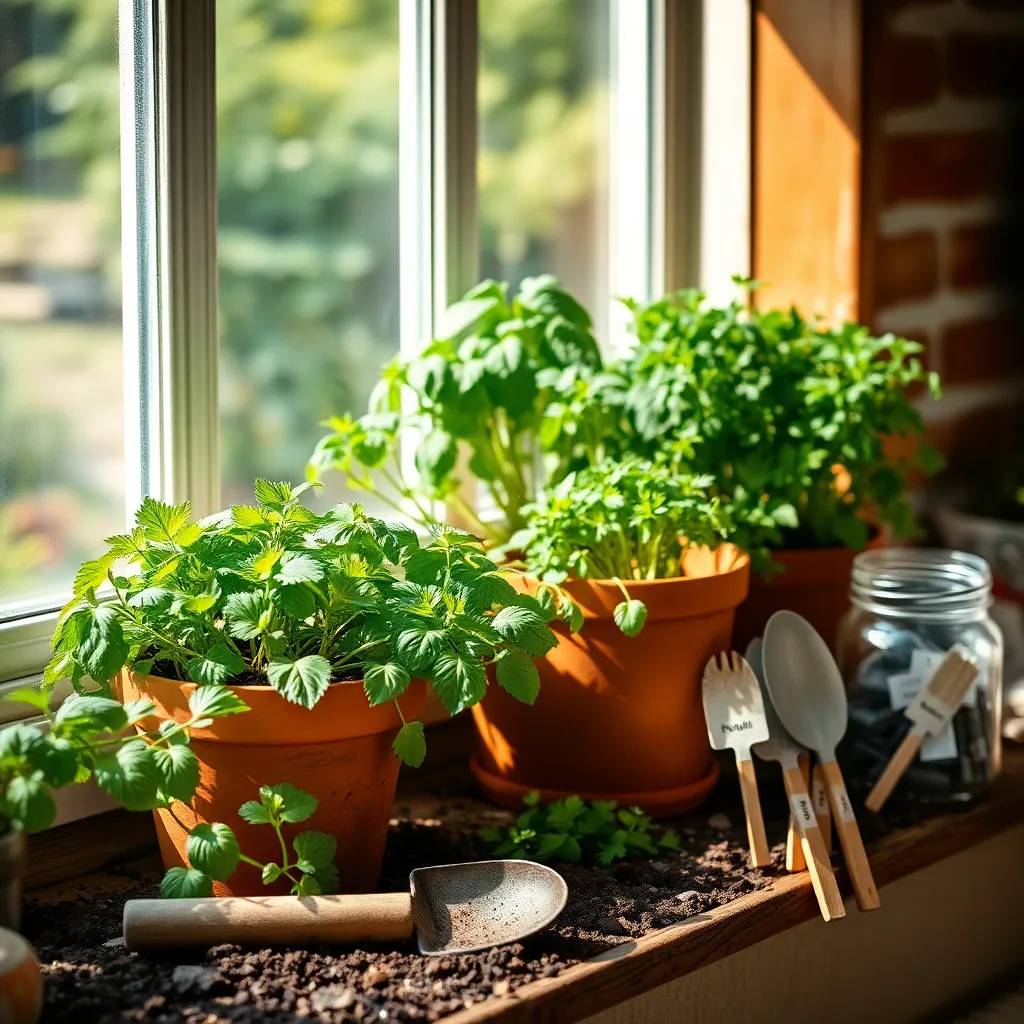
Creating the perfect potting mix for herbs can significantly enhance their growth on your windowsill. It’s essential to use a well-draining potting mix since herbs don’t thrive in waterlogged conditions.
For a basic herb potting mix, combine equal parts of coconut coir, perlite, and compost. This combination ensures good aeration and retains the right amount of moisture, promoting healthy root development.
Advanced gardeners might consider adding a bit of vermiculite to further improve moisture retention. This can be particularly beneficial for herbs like basil that enjoy slightly more moisture than others.
It’s important to adjust the potting mix based on specific herb needs; for instance, Mediterranean herbs like rosemary and thyme prefer a slightly sandier mix. Add a small amount of sand to the mix for these herbs to mimic their natural growing conditions.
Watering Tips for Indoor Herbs
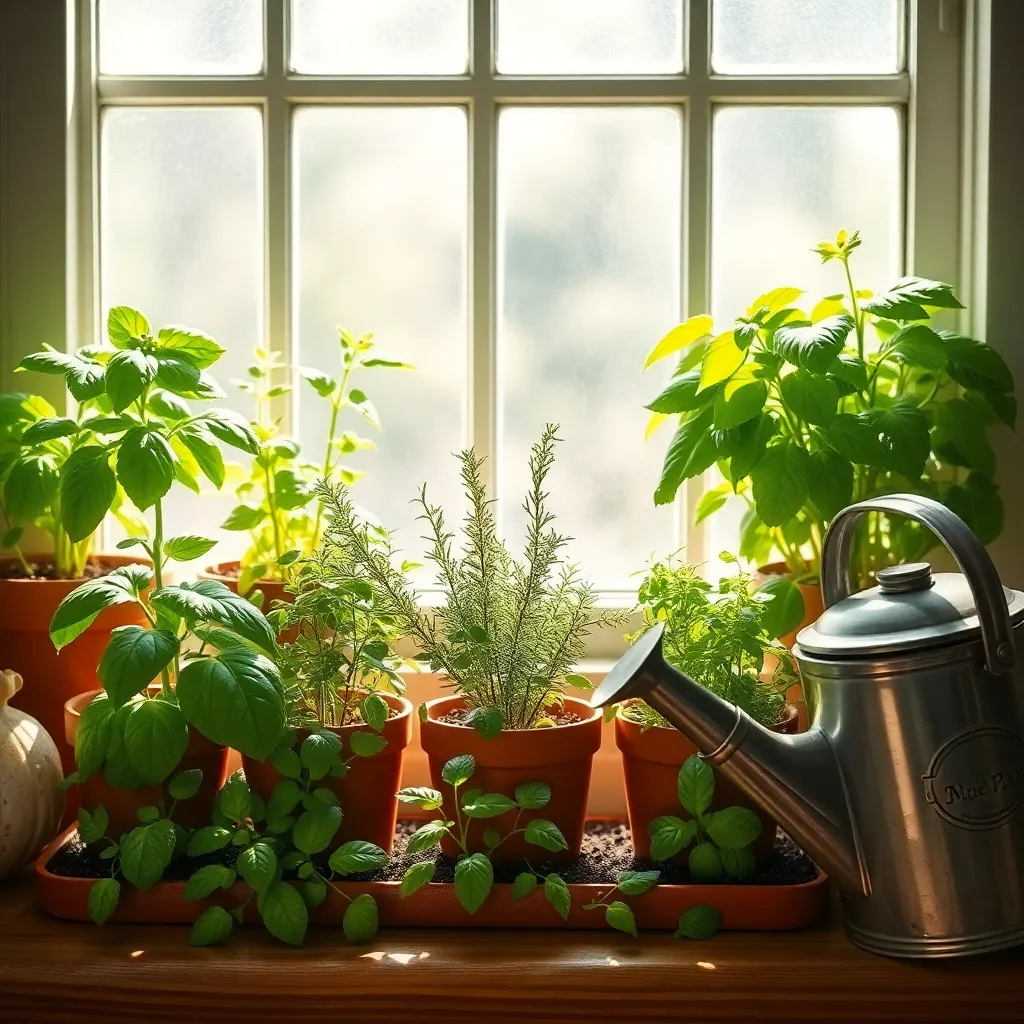
Water is essential for the thriving growth of your indoor herbs, but overwatering is a common mistake. Begin by ensuring your pots have drainage holes; this allows excess water to escape, preventing root rot.
Check the soil moisture before watering; insert your finger about an inch deep into the soil. If it feels dry, it’s time to water, but if it’s still moist, wait a day or two.
When watering, do so thoroughly until you see water draining from the bottom of the pot. This practice ensures that the roots receive enough moisture and helps in flushing out any accumulated salts.
Consider using a spray bottle for herbs like basil and mint, which enjoy high humidity. Mist the leaves lightly every few days to mimic their natural environment and keep them lush.
Advanced gardeners might invest in a moisture meter for precision, especially if you have several herbs with varying water needs. This tool helps you maintain just the right moisture level without guesswork, ensuring your herbs flourish.
Harvesting and Using Your Herbs
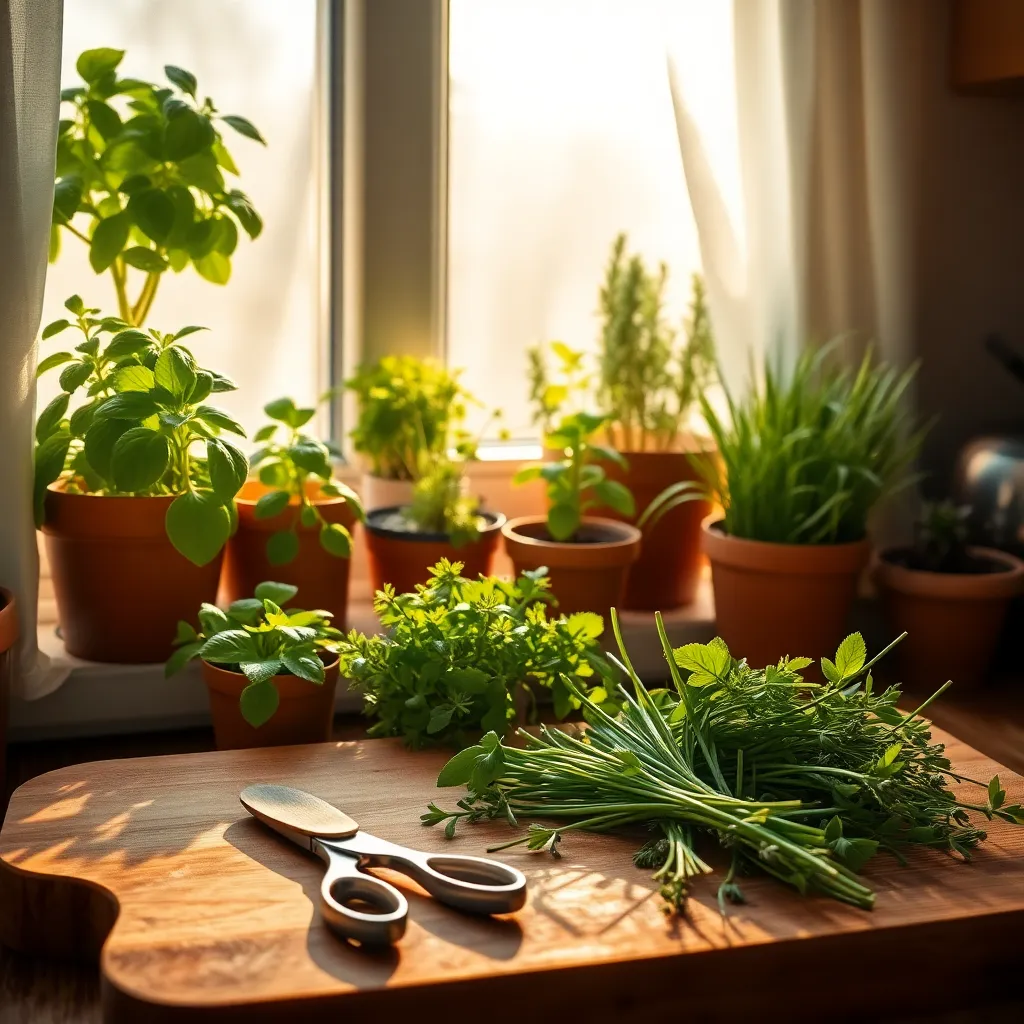
Once your indoor herbs are thriving, knowing when and how to harvest them is crucial for maximum flavor and yield. Harvesting regularly encourages new growth, ensuring your plants stay productive and healthy.
Begin by snipping herbs in the morning after the dew has dried but before the sun gets too hot. This is when the essential oils are most concentrated, offering the most robust flavor.
Use sharp scissors or pruning shears to avoid damaging the plant. When cutting, leave at least one-third of the plant intact to promote regrowth.
For herbs like basil and mint, pinch off the top sets of leaves, taking care to cut just above a leaf node. This technique encourages bushier growth, leading to a more abundant harvest over time.
Once harvested, herbs can be used fresh or preserved for later. Drying and freezing are excellent methods to keep your herbs flavorful throughout the year.
To dry herbs, bundle them and hang them in a well-ventilated area away from direct sunlight. Alternatively, you can lay them on a screen or use a dehydrator for faster results.
For freezing, chop the herbs and place them in ice cube trays, covering them with water or olive oil. This method preserves freshness and allows you to easily add herbs to dishes as needed.
Experiment with using your herbs in different recipes, from fresh salads to hearty soups. Their vibrant flavors can transform any dish, making your windowsill garden an invaluable kitchen asset.
Conclusion: Growing Success with These Plants
In exploring the world of cultivating herbs on your windowsill, we’ve uncovered five essential relationship concepts: nurturing growth through attentive care, the importance of space and boundaries, fostering patience and understanding, the joy of shared activities, and the rewards of consistent effort. These elements, mirrored in both your herb garden and personal relationships, underscore the potential for flourishing connections when nurtured with intention.
As your immediate next step, choose an herb to grow together with a loved one. This simple act of planting and tending can serve as a living metaphor for your relationship, prompting meaningful discussions and shared moments of joy.
Remember to bookmark this article as a handy reference, ensuring these insights remain at your fingertips to inspire your relational journey. As you continue nurturing both your herbs and your relationships, envision a future where love grows deeply and abundantly. Your commitment to growth, patience, and shared experiences today lays the groundwork for lasting relational success tomorrow. Embrace the journey with warmth and enthusiasm, knowing that your efforts will cultivate a thriving relationship garden.

